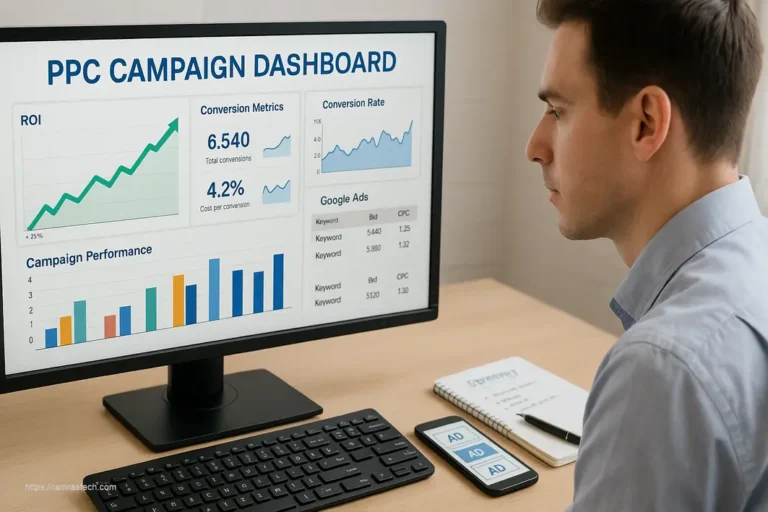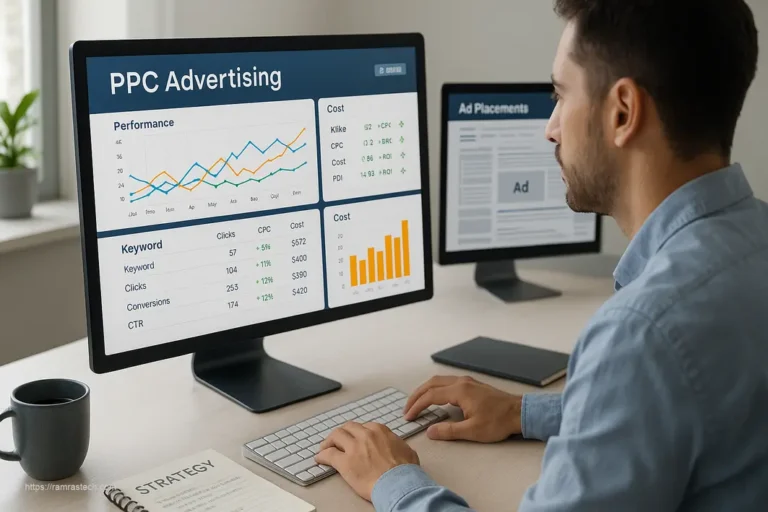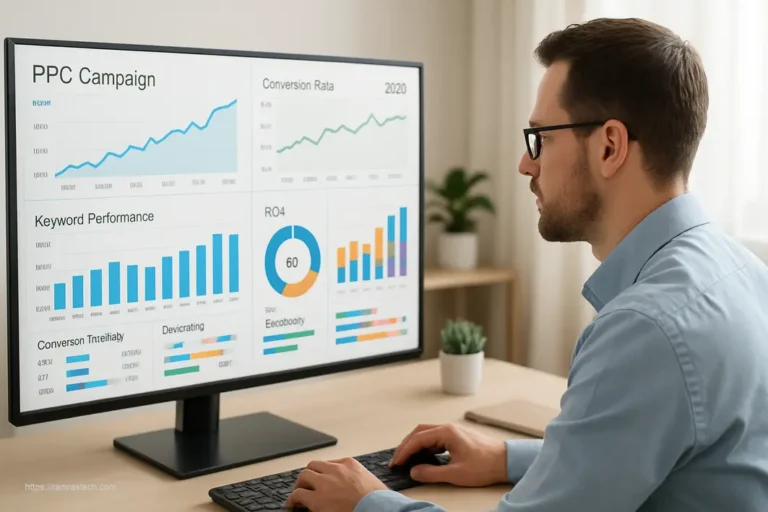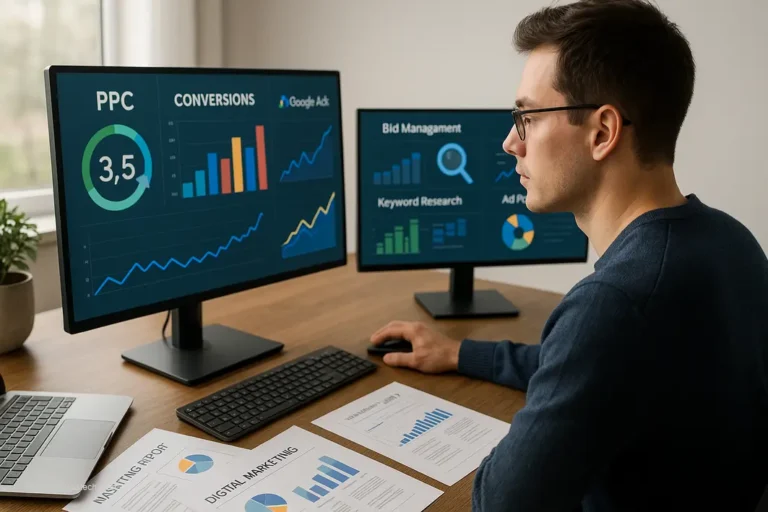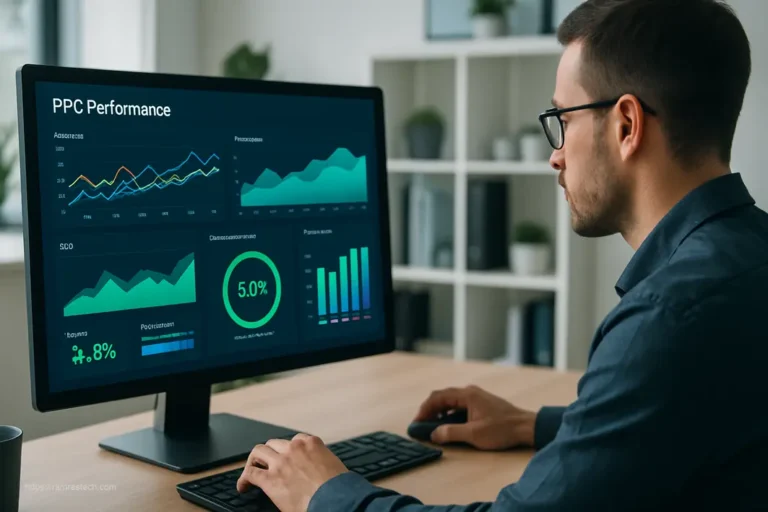7 Proven PPC Strategies to Maximize ROI in 2025
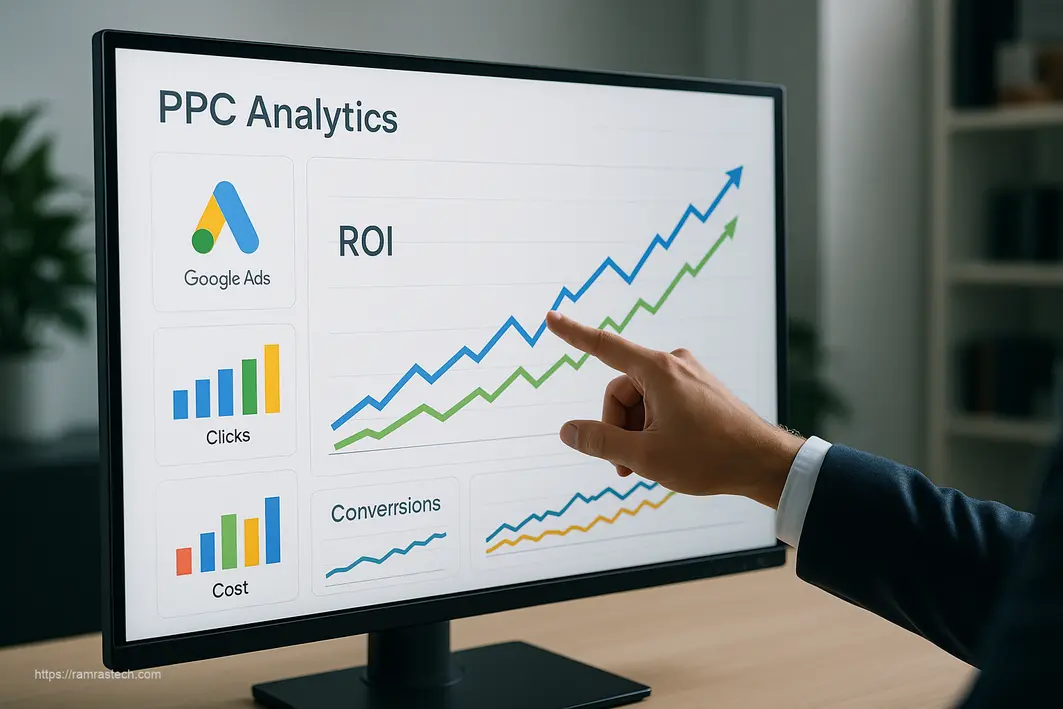
In the ever-evolving landscape of digital marketing, Pay-Per-Click (PPC) advertising continues to be a powerhouse for businesses seeking immediate visibility and measurable results. But as we move deeper into 2025, simply running PPC campaigns isn’t enough—you need strategic approaches that maximize every dollar spent. With rising ad costs and intensifying competition across platforms, optimizing your PPC strategies for ROI has never been more crucial.
Whether you’re managing campaigns for a small business or overseeing enterprise-level PPC initiatives, staying ahead of the curve with innovative approaches can mean the difference between wasting budget and driving profitable growth. Let’s explore how you can transform your PPC campaigns into ROI-generating machines in today’s digital ecosystem.
Understanding the PPC Landscape in 2025
The PPC advertising world has undergone significant transformation in recent years. With the deprecation of third-party cookies, increasing privacy regulations, and the rapid advancement of AI and machine learning technologies, advertisers face both challenges and opportunities.
In 2025, effective PPC strategies must account for these shifts while keeping the fundamental goal in sight: generating the highest possible return on your advertising investment. This means not just driving traffic but ensuring that traffic converts at optimal rates.
“The average cost per click across industries has increased by 27% since 2023,” according to recent industry reports, making ROI optimization not just beneficial but essential for campaign sustainability.
What Makes PPC Strategies Effective in 2025?
Before diving into specific strategies, let’s clarify what makes PPC efforts truly effective in today’s market:
-
Data-driven decision making: Successful PPC strategies rely on comprehensive analytics and performance data, not hunches or outdated practices.
-
Seamless integration: Top-performing campaigns don’t exist in isolation but work in harmony with other marketing channels and business objectives.
-
Adaptability: With platform algorithms and consumer behaviors constantly changing, effective strategies must be flexible and responsive.
-
Conversion focus: Clicks alone don’t pay bills—strategies must prioritize turning clicks into meaningful business outcomes.
With these principles in mind, let’s explore seven proven PPC strategies that can dramatically improve your ROI in 2025.
Strategy #1: AI-Powered Bidding and Automation
Gone are the days of manual bid adjustments and guesswork. In 2025, AI-powered bidding strategies have become sophisticated enough to consistently outperform human management, especially at scale.
How AI Bidding Maximizes ROI
Platforms like Google Ads and Meta offer increasingly powerful automated bidding options that optimize for specific business outcomes. These systems analyze thousands of signals in real-time to adjust bids based on the likelihood of conversion.
“Advertisers using Smart Bidding strategies see an average of 35% improvement in conversion value compared to manual bidding,” notes a recent Google case study. This is because AI can process and react to data far more quickly and comprehensively than human managers.
Implementing AI bidding effectively requires:
- Setting clear conversion goals aligned with business objectives
- Providing sufficient historical data for the AI to learn from
- Allowing time for optimization before making major changes
- Regularly reviewing and refining conversion tracking accuracy
Take the example of TechSolutions Inc., which shifted from manual CPC to Target ROAS bidding and saw their return on ad spend increase by 42% while maintaining the same budget. Their success came from properly setting up conversion tracking and giving the system four weeks to optimize before making additional changes.
Strategy #2: Segmented Campaign Structure for Precision Targeting
One of the biggest ROI killers in PPC is lumping different audiences, objectives, or products into the same campaigns. In 2025, sophisticated segmentation isn’t just nice to have—it’s essential for maximizing returns.
Building High-Performance Campaign Structures
Effective segmentation allows you to align messaging, bidding strategies, and budget allocation with specific user intents and business goals. For example, separating campaigns by:
- Brand vs. non-brand terms: Brand searches typically convert at higher rates and lower costs, warranting different bidding strategies and budgets.
- Product categories: Different products have varying margins, competition levels, and customer journeys.
- Customer journey stage: Awareness, consideration, and decision phases each require distinct approaches.
- Device type: Mobile, desktop, and tablet users often show different behaviors and conversion patterns.
Amazon advertisers using three distinct campaign types—branded, competitor, and generic keywords—consistently outperform those using mixed campaigns. This precision allows for better budget allocation toward the highest-performing segments.
When implementing segmented structures, be careful not to over-segment to the point where data becomes too thin for meaningful optimization. The goal is finding the balance between precision and sufficient data volume.
Strategy #3: Landing Page Optimization for Conversion Maximization
Even the most brilliantly targeted PPC campaigns will fail if they send traffic to poor-performing landing pages. In 2025, with increasing CPCs across platforms, ensuring your landing pages convert at maximum efficiency is critical for ROI.
Creating High-Converting Destination Pages
The science of landing page optimization has evolved significantly, with several key elements proving essential for PPC success:
- Message match: Your landing page should seamlessly continue the conversation started in your ad, maintaining consistent headlines, offers, and visuals.
- Mobile-first design: With over 75% of shoppers now using mobile devices for at least part of their purchase journey, ensuring your landing pages provide excellent mobile experiences is non-negotiable.
- Page speed: Each second of load time can reduce conversions by up to 7%, according to industry benchmarks.
- Clear, compelling CTAs: Visitors should never wonder what action to take next.
A particularly effective approach is creating dedicated landing pages for specific PPC campaigns rather than sending all traffic to generic website pages. This allows for precise alignment with ad messaging and intent.
An e-commerce client in the fitness industry implemented this approach by creating product-specific landing pages that matched their PPC ad groups, resulting in a 62% increase in conversion rate compared to sending traffic to general category pages. This transformation was achieved through strategic landing page optimization techniques that focused on user experience and conversion clarity.
Strategy #4: Dynamic Remarketing for Abandoned Journeys
Perhaps no PPC strategy offers more consistent ROI than well-executed remarketing campaigns. In 2025, dynamic remarketing has evolved beyond simple reminder ads to become sophisticated conversion recovery systems.
Implementing Advanced Remarketing Tactics
Dynamic remarketing shows previous visitors ads featuring the exact products or services they viewed on your site, creating highly relevant ad experiences that drive significantly higher conversion rates.
According to recent data, remarketing campaigns typically achieve:
- 2-3X higher click-through rates than standard display ads
- 70% lower cost-per-acquisition compared to cold traffic campaigns
- 25-35% higher average order values when properly optimized
To maximize remarketing ROI in 2025:
- Segment audiences by behavior: Create different remarketing lists based on specific actions (product views, cart abandonment, partial form completion) to deliver tailored messaging.
- Implement frequency capping: Avoid ad fatigue by limiting how often remarketing ads appear to the same user.
- Use dynamic creative optimization: Let AI systems test different creative elements to find the highest-performing combinations.
- Set appropriate lookback windows: Different products and services have different consideration timelines—adjust your remarketing duration accordingly.
A regional furniture retailer implemented these advanced remarketing tactics and saw their remarketing campaigns achieve a 412% ROAS compared to 180% for their prospecting campaigns, demonstrating the exceptional ROI potential of this strategy when executed properly.
Strategy #5: Audience Targeting and Personalization
In a post-cookie world, sophisticated audience targeting has become both more challenging and more crucial for PPC success. The advertisers achieving the highest ROI in 2025 are those leveraging first-party data and advanced audience solutions.
Leveraging Advanced Audience Insights
Rather than relying solely on keywords, successful PPC strategies now incorporate detailed audience signals to reach the right people at the right moment:
- First-party data integration: Using your own customer data to create lookalike audiences and customer match campaigns.
- In-market audience targeting: Reaching people actively researching or considering products or services like yours.
- Affinity and custom intent audiences: Targeting based on demonstrated interests and behaviors.
- Demographic layering: Refining campaigns based on age, income, parental status, and other demographic factors.
Perhaps most importantly, successful advertisers are now personalizing ad experiences based on these audience insights. Research shows personalized ads drive 5-15% higher conversion rates than generic messaging.
“In our work with enterprise clients, we’ve seen that combining demographic, behavioral, and intent signals consistently outperforms traditional keyword-only targeting by 30-45% in terms of conversion rate,” reports a leading digital agency specializing in PPC optimization.
To implement this strategy effectively, start by analyzing your existing customer data to identify your most valuable customer segments. Then create tailored campaigns with messaging that speaks directly to each segment’s specific needs and pain points. This approach aligns perfectly with proven digital marketing strategies for 2025 that emphasize personalization across channels.
Strategy #6: High-Intent Keyword Focus
As competition for generic keywords continues to intensify, advertisers achieving the highest ROI are shifting focus to high-intent, conversion-focused keywords—even if they have lower search volumes.
Prioritizing Quality Over Quantity
In 2025, the smart PPC approach isn’t capturing the most traffic but capturing the right traffic. This means:
- Long-tail keyword targeting: More specific phrases (often 3+ words) that indicate clearer purchase intent.
- Commercial intent modifiers: Terms like “buy,” “price,” “near me,” or “best” that signal readiness to convert.
- Problem-solution pairings: Keywords that combine a specific problem with a solution your product offers.
For example, a hotel advertiser might see better ROI bidding on “book oceanfront hotel in Miami Beach” than the broader “Miami hotels” despite the latter having much higher search volume. The specificity indicates higher purchase intent and typically results in better conversion rates.
This doesn’t mean abandoning broader terms entirely—they still have value for brand awareness and filling the top of your funnel. However, allocating a larger portion of your budget to high-intent terms typically yields better overall ROI.
A B2B software company implemented this strategy by shifting 60% of their budget from generic industry terms to specific, problem-focused keywords. The result was a 47% reduction in cost per qualified lead despite a 25% reduction in overall traffic volume.
Strategy #7: Integrating AI and Machine Learning for Predictive Optimization
Beyond automated bidding, AI and machine learning now offer advanced capabilities to predict and optimize campaign performance before you spend a single dollar.
Leveraging Predictive Analytics for PPC
In 2025, cutting-edge PPC strategies incorporate predictive technologies to:
- Forecast conversion likelihood: Scoring potential clicks based on their predicted probability of converting.
- Identify audience propensity: Determining which segments are most likely to respond to specific offers.
- Optimize budget allocation: Automatically shifting spend to campaigns, ad groups, or even times of day with the highest predicted ROI.
- Predict seasonal trends: Anticipating demand fluctuations before they occur to adjust strategies proactively.
Implementing these advanced approaches requires either specialized tools or partnerships with agencies having the necessary technological capabilities. However, the ROI benefits can be substantial.
A retail chain implemented AI-driven predictive budget allocation across their PPC campaigns and saw a 28% increase in ROAS with the same overall ad spend. The system identified high-performing micro-segments and opportunities that would have been impossible to spot manually.
“The future of PPC belongs to advertisers who can leverage machine learning to make proactive optimizations rather than reactive adjustments,” notes a leading industry analyst. “This represents the next evolution in maximizing PPC ROI.”
Implementing Your PPC ROI Strategy: A Practical Roadmap
With these seven strategies in mind, how do you actually implement them in your business? Here’s a practical approach:
-
Audit your current performance: Before making changes, thoroughly analyze your existing campaigns to identify strengths, weaknesses, and opportunities.
-
Prioritize based on impact: You likely can’t implement all seven strategies simultaneously. Rank them based on potential ROI impact for your specific business.
-
Test strategically: Implement changes in a controlled manner where you can measure results against control groups when possible.
-
Build measurement frameworks: Ensure you have proper attribution and analytics in place to accurately track the impact of your optimizations.
-
Iterate continuously: PPC success in 2025 isn’t about finding a perfect formula and sticking to it—it’s about constant testing, learning, and refinement.
Remember that PPC strategies don’t exist in isolation. The most successful advertisers integrate their PPC efforts with broader marketing initiatives, including content marketing strategies and marketing automation tools to create cohesive customer experiences across channels.
Common PPC ROI Pitfalls to Avoid
As you implement these strategies, be aware of these common pitfalls that can undermine your ROI:
1. Chasing Vanity Metrics
High click-through rates or low CPCs mean nothing if they don’t translate to business outcomes. Always tie your PPC metrics to actual revenue impact.
2. Neglecting the Full Conversion Path
Many advertisers focus exclusively on last-click attribution, missing the role PPC plays in initiating and nurturing customer journeys. Implement more sophisticated attribution models to understand true campaign value.
3. Inadequate Testing Methodology
Poorly designed tests can lead to false conclusions. Ensure your testing approaches use proper control groups, statistical significance, and clear success metrics.
4. Budget Inflexibility
Rigidly sticking to predetermined budget allocations regardless of performance can severely limit ROI. Build flexibility into your approach to capitalize on opportunities when they arise.
5. Ignoring Lifetime Value
Optimizing solely for initial conversion cost without considering customer lifetime value can lead to acquiring less valuable customers. Factor long-term value into your PPC strategy.
The Future of PPC and ROI Optimization
As we look beyond 2025, several emerging trends will likely shape the future of PPC ROI optimization:
-
Voice search optimization: As voice-activated devices continue to proliferate, optimizing for conversational queries will become increasingly important.
-
Visual search integration: Platforms are increasingly incorporating visual search capabilities, opening new opportunities for product-focused advertisers.
-
Privacy-first targeting solutions: As third-party data becomes less available, innovative approaches to targeting while respecting privacy will differentiate leading advertisers.
-
Cross-platform attribution: More sophisticated models for understanding how PPC interacts with other channels will emerge, allowing for more holistic optimization.
Staying ahead of these trends while mastering current best practices will position you for continued PPC success.
Conclusion: Your PPC ROI Transformation
Maximizing ROI from PPC advertising in 2025 isn’t about finding a single silver bullet—it’s about implementing a comprehensive strategy that leverages multiple optimization approaches in concert.
By embracing AI-powered bidding, strategic campaign segmentation, conversion-focused landing pages, dynamic remarketing, sophisticated audience targeting, high-intent keywords, and predictive analytics, you can transform your PPC campaigns from cost centers into profit-generating engines.
The competitive advantage goes to advertisers willing to move beyond conventional approaches and embrace data-driven, technology-enabled strategies that continuously evolve with the changing digital landscape.
What PPC strategies have delivered the highest ROI for your business? Have you implemented any of the approaches discussed here? Share your experiences in the comments below, and let’s learn from each other’s successes and challenges in the ever-evolving world of PPC advertising.
FAQs About PPC Strategies for ROI Maximization
What is a good ROI for PPC campaigns in 2025?
A good ROI varies significantly by industry, product price point, and business model. However, most healthy PPC campaigns should aim for at least 200-300% ROI (or a 2:1 to 3:1 return). For some industries with high customer lifetime values, even campaigns with lower initial ROI may be profitable long-term when retention is factored in.
How long does it take to see results from new PPC strategies?
Expect an initial learning period of 2-4 weeks for most significant PPC changes, particularly when implementing AI-driven strategies that require data to optimize effectively. Minor optimizations may show results more quickly, while major strategic shifts might take 6-8 weeks to reach their full potential performance.
Should I focus on Google Ads, Microsoft Ads, or social media for the best PPC ROI?
The highest ROI platform depends entirely on your specific business, audience, and offerings. For B2B services, LinkedIn and Google often provide the best results. For consumer products with visual appeal, Instagram and Facebook frequently lead in performance. The best approach is usually a diversified strategy across multiple platforms, with budget allocation based on performance data.
How much should I budget for PPC to see meaningful ROI?
Rather than starting with a fixed budget, begin by calculating your target customer acquisition cost based on your profit margins and customer value. Then test campaigns with enough budget to gather statistically significant data (typically at least 100 clicks per variable you’re testing). Scale successful campaigns gradually while maintaining performance metrics.
